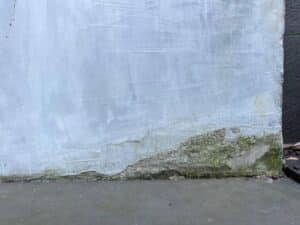Yes, it’s possible to minimise foundation movement. Some of the methods to stop such movement are addressing plumbing issues, ensuring proper drainage, and monitoring trees near your property.
Underpinning a house with the help of a licenced engineer can also help in minimising movement.
In this post, we’ll discuss how to prevent foundation movement in your home.
What Are the Soil Classifications in My Area?
The following are the soil classifications in Bendigo:
- A: Stable sand and rock – experiences minimal ground movement
- S: Slightly reactive clay soil
- M, M-D: Moderate reactivity in clay or silt soils, changing with moisture levels
- H1, H1-D: Clay soils with high reactivity
- H2, H2-D: Clay soils with very high reactivity
- E, E-D: Soils with extreme reactivity
- P: Soft, inconsistent soil with varied fill depths, reactive due to abnormal moisture conditions or sites that cannot be classified
Is It Normal For Footings to Move?
No, it is not normal for footings to move. Footings are designed to be stable and support the structure of a building without shifting. Movement in footings can lead to structural problems, including cracks in your walls, uneven floors, and doors or windows that do not close properly. Such movement is often caused by changes in the soil beneath the footings.
In some cases, minor movement may occur due to seasonal changes in soil moisture, especially in areas with expansive clay soils. However, any noticeable movement or shifting is a cause for concern and should be assessed by a professional.
It’s essential to address these issues promptly to prevent further damage to the property. Regular maintenance, proper drainage around the foundation, and monitoring for signs of movement can help in identifying potential problems early.
If movement is detected, methods like underpinning or soil stabilisation may be necessary to correct the issue and ensure the long-term stability of the building.
How Can I Prevent Foundation Movement?
These are the easiest ways you can stop foundation movement on your property today:
Address Plumbing Issues
Plumbing issues can significantly contribute to foundation movement. Leaks from pipes can lead to excess moisture around the foundation, causing the soil to expand and put pressure on the foundation. Regularly check for any signs of plumbing leaks and address them promptly.
It’s also important to ensure that your sewage system is functioning correctly. Leaks from sewer lines can also lead to soil instability and foundation problems.
Ensure Proper Drainage
Proper drainage is vital in preventing foundation movement. Water should be directed away from your home’s foundation to avoid soil saturation. Install effective gutters and downspouts, and ensure they are regularly cleaned and free of blockages. Maintaining a slope away from your home in the landscaping is crucial to facilitate water runoff.

Additionally, consider installing a drainage system like French drains if you experience persistent issues with water accumulation near your foundation.
Monitor Tree and Plant Growth
Trees and plants can impact your foundation due to root growth and soil moisture changes. It’s essential to plant trees at a safe distance from your home – generally, the distance should be at least equal to the mature height of the tree.
Regularly monitor and manage the growth of trees and plants to mitigate potential risks to your foundation. Keep an eye out for signs you need foundation repair, as unchecked root growth can be a contributing factor.

